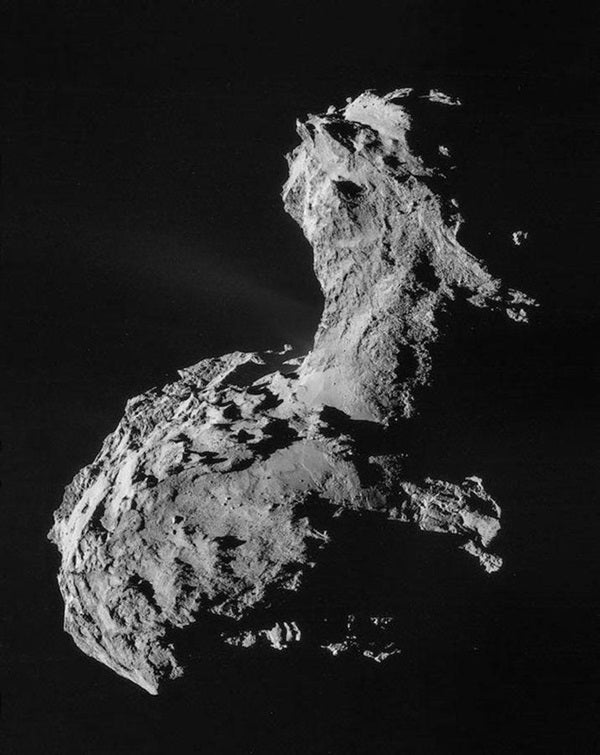Astronomers believed that for two comets to merge in such a way, they must possess three traits: They must be extremely low in density, rich in volatiles (elements and compounds with low boiling points), and most importantly, moving very slowly so that they don’t completely pulverize each other upon contact. The problem is that astronomers also know that such sluggish collisions primarily occurred in the infant solar system, some four billion years ago.
So, if a fragile rock the size of Chury (with a radius of roughly a mile) has been roaming a collision-heavy region of the solar system for the past four billion years, how has it survived?
Yesterday, a team of researchers published a study in Nature Astronomy showing they finally have an answer to that question: It didn’t.
Instead, the international team used numerical simulations, run at the Mésocentre Sigamm at the Observatoire de la Côte d’Azur, to show that when two comets catastrophically collide (at speeds of up to 2,200 miles per hour), only a small amount of material is actually pulverized and lost into space.
Though this is interesting, the key insight shown in the simulations is that comets can reform in a just a few short days, even hours in some cases. Since such collisions occur frequently in the Kuiper belt (the ring of comets beyond Neptune), Chury could have formed at any point in time, not just in the early solar system like previously thought.
The timing of Chury’s birth is not the only problem the researchers solved with this new study. The simulations also show that holes and stratified layers — features that have been observed in Chury — should form within a comet that reconstructs itself in this manner.
Finally, the researchers found that if Chury formed in one of these types of collisions, it would not be significantly heated or compressed. Without heat or pressure, the primordial material that makes up the comet would remain in pristine condition. So, even if Chury formed just a few decades back, astronomers can still analyze its material and learn about the origins of the solar system. Not too bad for a comet that looks like a toy duck.
ESA/Rosettta/NavCam/S. R. Schwartz et al.











